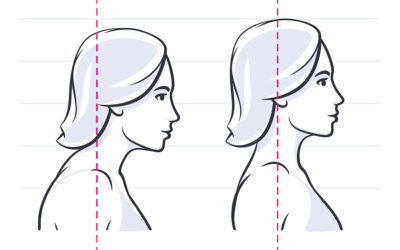At one time or another, you’ve probably come across the phrase “belly breathing.” You might have heard a well-meaning yoga teacher, fitness instructor, personal trainer or even me in my posture classes talk about it! People use this phrase to encourage us to initiate our breath using the diaphragm. This is good. The diaphragm should be the primary muscle of inspiration. However, many of us are stuck in a pattern of shallow chest breathing with little diaphragm movement. I certainly was! Although having someone encourage use to use this powerful muscle is good, we can easily misinterpret the idea.
Try this. Put your hands on your belly (as shown in the photo above) and breathe into your belly. This should result in pushing the abdomen straight up towards the ceiling. Since we do not have lungs in our belly, clearly, air is not causing the belly’s forward expansion. Instead, postural adaptations are causing the movement. Unfortunately, the results aren’t great. The abdominal muscles overly lengthen. The rib cage flares up and out. The chest lifts. The lower back extends–moving higher off the ground–and the neck muscles tighten. Pushing the belly excessively forward upon inhale also changes the shape of the diaphragm, flattening it out, which reduces its effectiveness for proper respiration. This is what most people do when being told, “Belly breathe!” But it’s obviously wrong.

When teaching diaphragm breathing, I have changed my approach. Rather than placing your hands on your belly, I’d have you move your hands to the sides of your rib cage and instruct you to expand your abdomen sideways, pushing the air outward into your hands. When breathing in this way, your abdominals don’t over stretch, and they maintain some tone, which is necessary to oppose the forward expansion and flattening of the diaphragm upon inhale. This abdominal resistance keeps the diaphragm in the correct, domed position for efficient breathing without postural compensations. When done correctly, your chest and rib cage will not tilt upwards. You’ll feel your lower back lengthen and flatten into the ground instead of lifting up into further extension, increased arch.
This healthy diaphragm-breathing pattern will maintain your core alignment between your rib cage and pelvis (which was discussed in my blog, The Secret Role of Your Abs). Even while inhaling, you’ll want to keep the rib cage positioned directly over your pelvis. When you belly breathe, this alignment is lost because of the postural adaptations mentioned above–rib cage flaring, back arching, etc. To maintain correct posture, then, some of the inhaled air will need to be directed sideways. This idea of diaphragm breathing can be challenging at first, so I suggest practicing on your back with hands on the sides of your rib cage before progressing to upright positions.
Just say NO to belly breathing and YES to diaphragm breathing!



